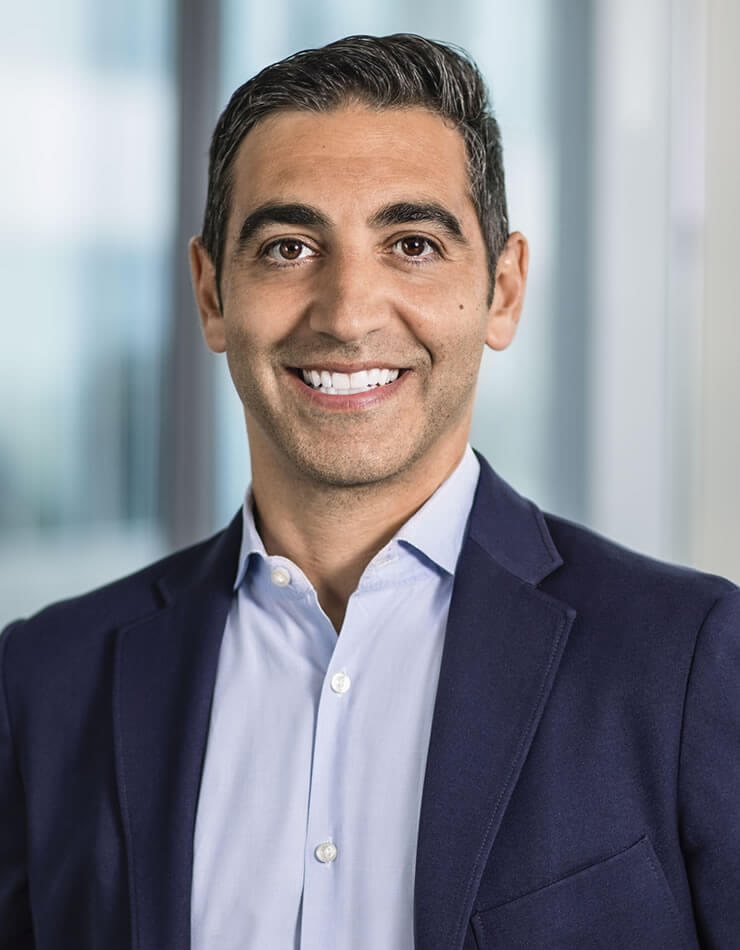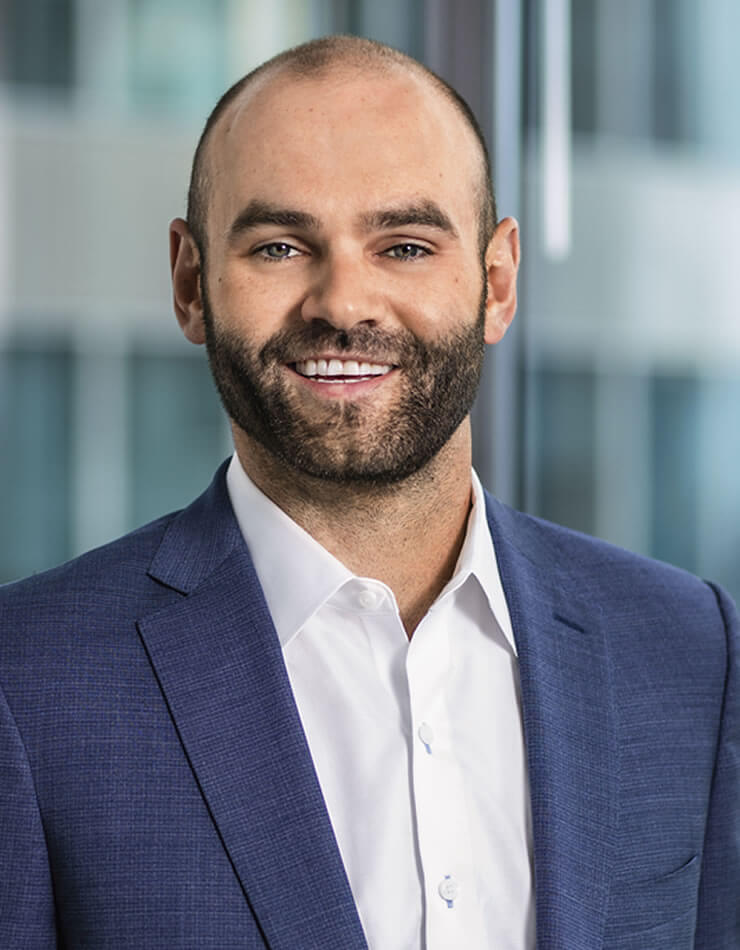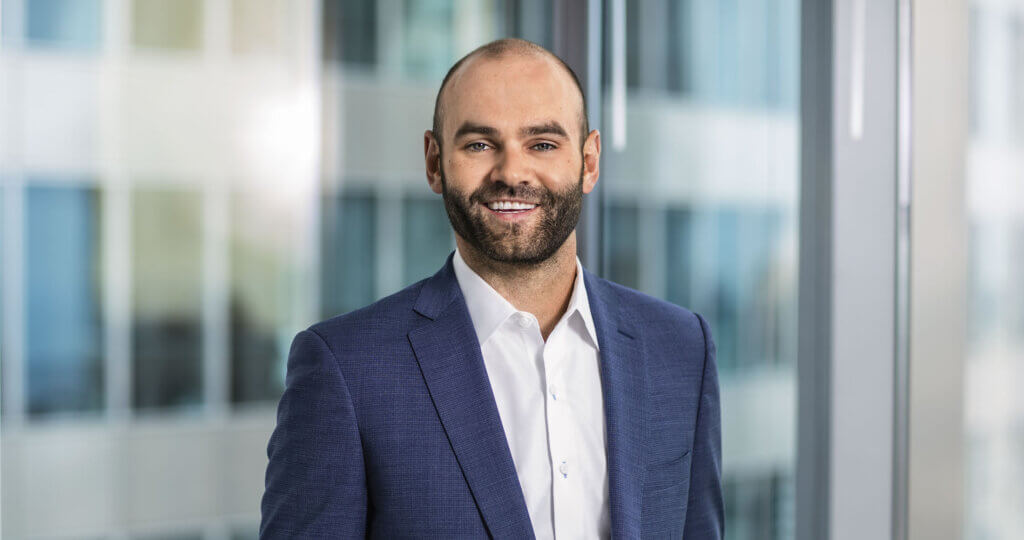Oakmark Equity and Income Fund – Investor Class
Average Annual Total Returns 09/30/22
Since Inception 11/01/95 9.12%
10-year 6.72%
5-year 4.11%
1-year -15.84%
3-month -4.03%
Expense Ratio: 0.84%
Expense ratios are based on estimated amounts for the current fiscal year; actual expenses may vary.
Past performance is no guarantee of future results. The performance data quoted represents past performance. Current performance may be lower or higher than the performance data quoted. The investment return and principal value vary so that an investor’s shares when redeemed may be worth more or less than the original cost. To obtain the most recent month-end performance data, view it here.
The Bear Market Continues
After a promising start, the recently ended quarter reverted to a continuation of the downward trend in security prices. When the June quarter ended, many market pundits optimistically noted that in each previous year when stocks had declined 20% or more by June 30, the next six months had seen positive returns, and a strong rally in July gave hope to the optimists. But the combination of rising interest rates and signs of economic slowing took the steam out of the stock market rally. The Federal Reserve continued its 2022 pattern of aggressive interest rate increases in the quarter and projected more rate hikes to come. Sadly, the Ukraine war carried on and the Covid-19 pandemic continued to impact lives. On the positive side of the ledger, unemployment in the U.S. remains very low; commodity prices, such as lumber, cotton and especially oil, have declined to more manageable levels; and corporate balance sheets appear well-prepared for a difficult economy.
We were recently asked whether this market environment resembled others in our experience. A well-known market truism is that the five most dangerous words for investors are, “This time things are different.” Nevertheless, the unprecedented money market characteristics of this cycle suggest that we accept this danger and say, “Yes, things are different this time.” Monetary authorities have suppressed interest rates previously, but never to the degree and duration experienced in recent years. So, when the Federal Reserve switched from supporting growth to fighting inflation in early 2022, the bond market was already recording one of its worst years. The benchmark 10-year U.S. Treasury note began the year yielding only 1.46%, and that yield has now risen to 3.84% as we write this. The price of this bond has declined more than 18% over nine months. No doubt bond investors now look skeptically whenever they see an article mention “ultra-safe Treasurys.” Nevertheless, this decline in bond prices has worked to make the asset class far more attractive. During the long-extended low interest rate period, TINA (“there is no alternative [to stocks]”) became an investor mantra. Now fixed income presents a viable opportunity and should again work to dampen portfolio volatility in balanced portfolios, such as the Equity and Income Fund.
So, if things are different this time, does this mean that we will invest differently, too? The answer to this question is a definitive “no.” Market conditions change, sometimes radically, but human nature is a constant. And as value investors, we depend on that constancy. We believe in every market environment, some securities are priced incorrectly, and it is our job to identify those mispricings. The decline in securities prices has been painful, but it is creating new opportunities that will be the basis of future positive outcomes. We do not know when the market environment will become more rewarding, but we know that over time price and value come together often enough to generate successful investing outcomes.
Quarter and Fiscal Year Review
The Equity and Income Fund lost 4.0% in the quarter, which compares to 5.0% for the Lipper Balanced Fund Index, the Fund’s performance benchmark. For the nine months of the calendar year ending September 30, the Fund fell 18.8%, compared to 19.5% for the Lipper. For the 12 months ended September 30 (the Fund’s fiscal year), the Equity and Income loss was 15.8%, which compares to 15.9% for the Lipper Balanced Fund Index. The annualized compound rate of return since inception in 1995 is 9.1%, while the corresponding return to the Lipper Index is 6.4%.
Despite the downward pull of the market, a handful of holdings contributed positively to return in the quarter. Carlisle, Reinsurance Group of America, HCA Healthcare, ConocoPhillips and Charles Schwab led the contributors, while Charter Communications, Alphabet, Ally Financial, Comcast and Arconic detracted most. Arconic is one of our few holdings with meaningful Russia exposure, and the company also experienced startup problems at a plant upgrade project. In the summer stock market swoon, small company shares have been particularly weak, and the price of Fund holdings, such as Arconic, LivaNova and Sealed Air, were pressured downward.
Contributors for the calendar year to date included Reinsurance Group of America, Carlisle, PDC Energy, Diamondback Energy (sold) and General Dynamics (sold). The leading nine-month detractors were Alphabet, General Motors, Charter Communications, Ally Financial and TE Connectivity. Finally, for the Fund’s fiscal year, Carlisle once again led the contributors’ list, followed by CVS Health (sold), Reinsurance Group of America, PDC Energy and Diamondback Energy. The largest detractors were Charter Communications, Ally Financial, Alphabet, General Motors and Citigroup (sold).
Transaction Activity
Befitting a period of market turbulence, we were active in the quarter, initiating seven new equity holdings while eliminating three. We were also active in the fixed income allocation where we increased portfolio duration to 4.5 years. We changed the asset allocation only slightly in the period. The seven purchases were Capital One Financial, EOG Resources, Intercontinental Exchange, Oracle, Warner Bros. Discovery, Willis Towers Watson, and Workday.
Following a 35% decline in its stock price this year, Capital One now trades for 5.2x consensus next-12-months earnings per share or 1.07x tangible book value. We believe this is an unreasonably low valuation for what we see as an above-average financial institution. Capital One has strong brand power, industry-leading technology, a proven management team and a culture of disciplined underwriting. We believe these factors will enable the company to continue to gain market share and earn attractive returns on equity through economic cycles. We recognize that consumer credit has been abnormally strong for the past several quarters, and we fully expect loan losses to normalize to a higher level over time. However, in our view, the market is pricing in an overabundance of fear and conservatism, creating an attractive risk/reward opportunity. With capital ratios well above regulatory requirements, Capital One has the financial fortitude to weather even a severely adverse economic environment, and our assessment of the business’s normalized earnings power leads us to an estimate of intrinsic value that far exceeds the current share price.
Returning to the portfolio after a two-year absence, EOG Resources is the largest independent onshore oil producer in the U.S. The company has an excellent track record of producing resources at low cost and organically discovering new resources. Its historical success stems from a decentralized culture that emphasizes returns and applies technology to reduce finding and development costs. Management is thoughtful about allocating capital to the highest return projects, and we like its focus on returns. EOG has a 20-year inventory of oil and gas wells that earn an economic return at $40 oil, and management continues to grow inventory via exploration. We believe EOG is undervalued using recent oil prices and even at a lower normalized oil price. Management’s commitment to returning at least 60% of free cash flow to shareholders, primarily as special dividends, should allow fund holders to benefit from current oil prices.
Intercontinental Exchange is one of the largest and, in our view, most successful financial exchange operators in the world. The company was created through a series of shrewd acquisitions executed by founder and CEO Jeff Sprecher. Sprecher is one of the more capable CEOs we’ve evaluated, having demonstrated a long history of astute capital allocation and a willingness to act and adapt rapidly to new opportunities and competitive threats. Today, Intercontinental Exchange competes in three primary business segments: exchanges, fixed income/data services, and mortgage technology. We believe each of these businesses exhibits attractive economic characteristics and that each should grow earnings well in excess of GDP over the long term. Despite this favorable long-term outlook, the company currently trades at a P/E ratio that is roughly in line with the S&P 500. We believe a business with Intercontinental Exchange’s strong competitive position, accomplished management team and attractive growth outlook deserves to trade well above a market multiple. We like buying great businesses at average prices and think Intercontinental Exchange represents a compelling opportunity to do just that.
The sell-off in the enterprise software sector, combined with the complexity related to the acquisition of Cerner, provided an opportunity for us to re-establish a position in Oracle. Oracle is one of the world’s largest and most profitable software companies—generating more than $42 billion in revenue and 40% operating margins. We have always admired the stability of Oracle’s business and the strength of its customer relationships. Now, the company’s organic growth is beginning to accelerate. Specifically, total revenue grew 7% in fiscal year 2022, and management projects that organic constant currency revenue growth will hit double digits in fiscal 2023. In addition, management believes that Cerner’s growth and margins can be higher under Oracle’s ownership than on a standalone basis. Finally, we commend Oracle’s repurchase of roughly half its share base over the past decade, which has nearly doubled each remaining share’s interest in the business. Trading for only 12x calendar 2023 earnings ex-cash, Oracle offers an attractive risk/reward opportunity, in our view.
Warner Bros. Discovery was created through the merger of Discovery, Inc. and WarnerMedia earlier this year. The combination created one of the largest media companies in the United States with a massive back catalog of valuable content from the Warner Bros. Studio, HBO, and the Discovery and Turner television networks. The company is on pace to earn around $1.50 per share this year despite directing much of its content catalog today toward its streaming services HBO Max and discovery+, which are collectively generating significant losses. We believe that this content catalog will be profitably monetized over time – whether through the company’s own streaming services or through licensing content to other platforms. Either path will significantly bolster earnings from current levels. Meanwhile, the combination will also allow for significant cost reductions across the cable network and streaming businesses, thereby further boosting profits. Warner Bros. shares are currently trading at just a mid-single digit multiple of our estimate of underlying power after accounting for these factors. We believe that is far too cheap for this quality content business.
Willis Towers Watson (WTW) is a global leader in advisory and risk broking services. We invested in the company in the wake of its cancelled business combination agreement with Aon. Under the leadership of a new CEO and a reconstituted board of directors, WTW has an opportunity to create significant shareholder value. Specifically, management sees a path toward mid-single digit or greater organic revenue growth, several hundred basis points of operating margin improvement, and higher free cash flow conversion over the next few years. In addition, management is in the process of repurchasing several billion dollars of stock. Along with its new CEO and reconstituted board, the company also has a new COO, CFO and head of transformation to oversee its operational initiatives, including common global platforms, “right-shoring” of operations, real estate rationalization and technology modernization efforts. If successful in this turnaround, WTW should warrant a higher multiple closer to that of other leading advisory and broking firms on a higher earnings base.
Workday is a global leader in cloud-based software for human resources (HR) and finance departments at large enterprises. Across the world, businesses are embracing cloud computing to reduce costs and improve performance. When large companies transition their HR and finance applications to the cloud, they overwhelmingly choose Workday. Indeed, Workday’s HR software boasts greater than 70% market share of cloud deployments in the Fortune 500. As the global software market steadily transitions to the cloud, Workday has a clear path to significant revenue growth. But despite the company’s many compelling advantages, the stock trades at a wide discount to its peer group on enterprise value/sales. We view today’s discount as an opportunity to invest in one of the world’s most innovative companies at a reasonable price.
Turning to the portfolio eliminations: two, Meta Platforms and Salesforce, were tax trades (i.e., trades undertaken to increase the Fund’s tax efficiency). We hold both companies in high regard and can envision returning to owning either in the future. We sold Citigroup to fund the purchase of Capital One Financial, which we believe offers a more attractive valuation.
We thank our shareholders for entrusting their assets to the Fund, and we welcome your questions and comments.
The securities mentioned above comprise the following preliminary percentages of the Oakmark Equity and Income Fund’s total net assets as of 09/30/22: Ally Financial 2.2%, Alphabet Cl A 4.2%, Aon 0%, Arconic 0.4%,Capital One Financial 0.5%, Carlisle 2.5%, Cerner 0%, Charles Schwab 1.3%, Charter Communications Cl A 1.4%, Citigroup 0%, Comcast Cl A 0.9%, ConocoPhillips 0.8%, CVS Health 0%, Diamondback Energy 0%, EOG Resources 0.4%, General Dynamics 0%, General Motors 2.2%, HCA Healthcare 2.2%, Intercontinental Exchange 0.8%, LivaNova 1.1%, Meta Platforms 0%, Oracle 0.5%, PDC Energy 1.9%, Reinsurance Group 2.6%, Salesforce 0%, Sealed Air 0.5%, TE Connectivity 2.3%, Warner Bros Discovery 0.7%, Willis Towers Watson 1.0%, and Workday Cl A 0.6%. Portfolio holdings are subject to change without notice and are not intended as recommendations of individual stocks.
The S&P 500 Total Return Index is a float-adjusted, capitalization-weighted index of 500 U.S. large-capitalization stocks representing all major industries. It is a widely recognized index of broad, U.S. equity market performance. Returns reflect the reinvestment of dividends. This index is unmanaged and investors cannot invest directly in this index.
The Lipper Balanced Fund Index measures the equal-weighted performance of the 30 largest U.S. balanced funds as defined by Lipper. This index is unmanaged and investors cannot invest directly in this index.
The compound return is the rate of return, usually expressed as a percentage that represents the cumulative effect that a series of gains or losses has on an original amount of capital over a period of time. Compound returns are usually expressed in annual terms, meaning that the percentage number that is reported represents the annualized rate at which capital has compounded over time.
The Fund invests in medium- and lower-quality debt securities that have higher yield potential but present greater investment and credit risk than higher-quality securities, which may result in greater share price volatility. An economic downturn could severely disrupt the market in medium or lower grade debt securities and adversely affect the value of outstanding bonds and the ability of the issuers to repay principal and interest.
The Oakmark Equity and Income Fund’s portfolio tends to be invested in a relatively small number of stocks. As a result, the appreciation or depreciation of any one security held by the Fund will have a greater impact on the Fund’s net asset value than it would if the Fund invested in a larger number of securities. Although that strategy has the potential to generate attractive returns over time, it also increases the Fund’s volatility.
The information, data, analyses, and opinions presented herein (including current investment themes, the portfolio managers’ research and investment process, and portfolio characteristics) are for informational purposes only and represent the investments and views of the portfolio managers and Harris Associates L.P. as of the date written and are subject to change and may change based on market and other conditions and without notice. This content is not a recommendation of or an offer to buy or sell a security and is not warranted to be correct, complete or accurate.
Certain comments herein are based on current expectations and are considered “forward-looking statements”. These forward looking statements reflect assumptions and analyses made by the portfolio managers and Harris Associates L.P. based on their experience and perception of historical trends, current conditions, expected future developments, and other factors they believe are relevant. Actual future results are subject to a number of investment and other risks and may prove to be different from expectations. Readers are cautioned not to place undue reliance on the forward-looking statements.
All information provided is as of 09/30/2022 unless otherwise specified.










